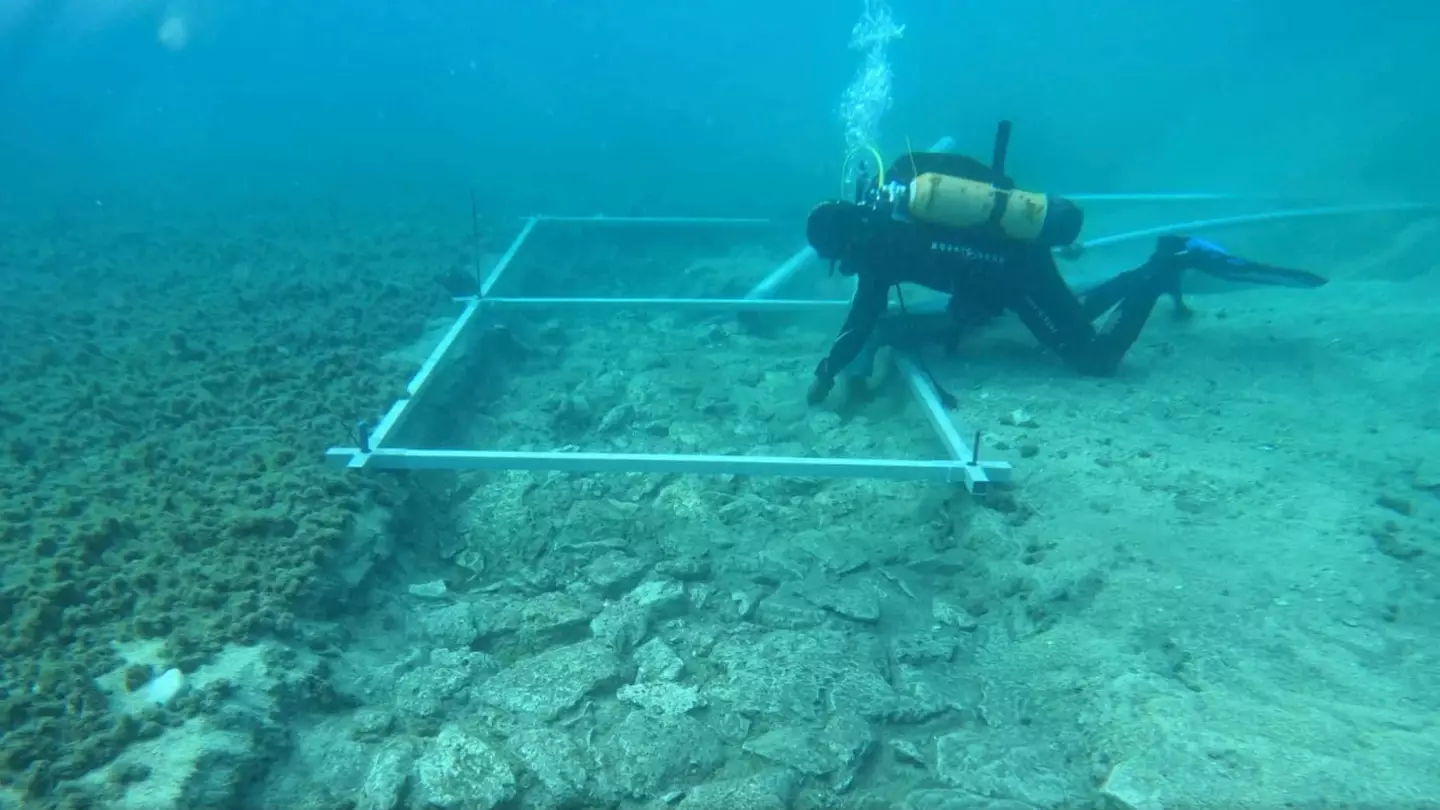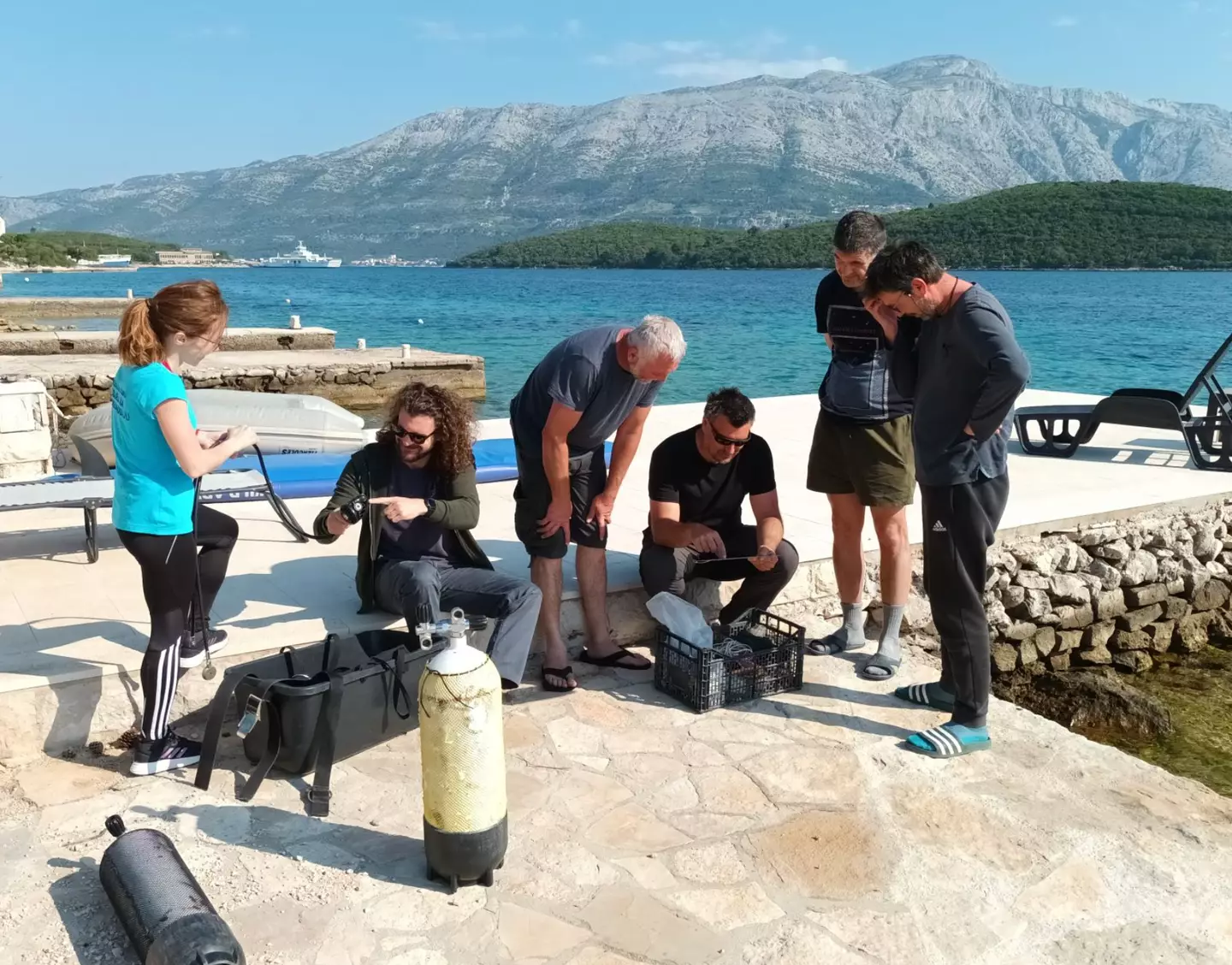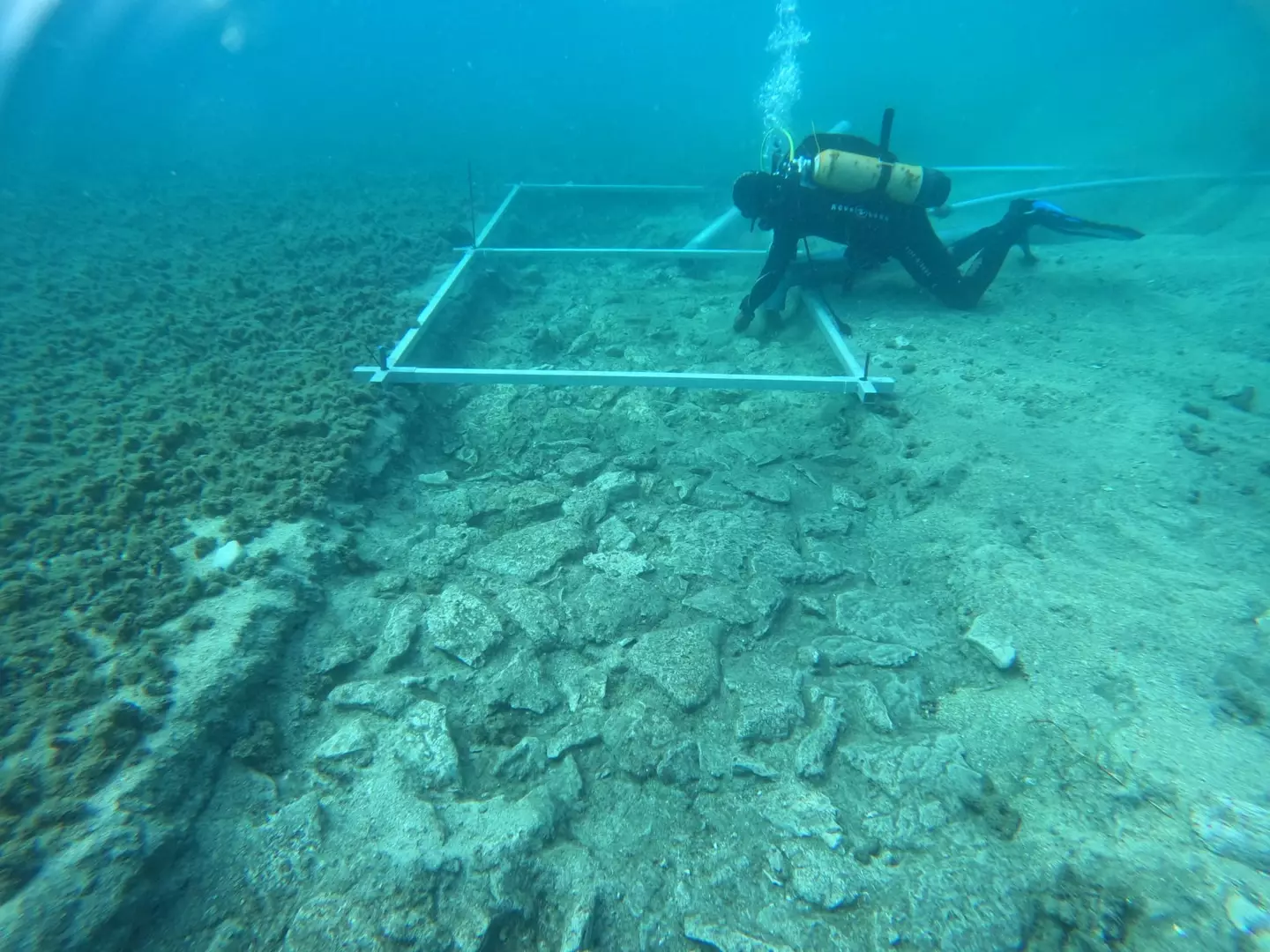
After archaeologists from the University of Zadar noticed odd structures off the western coast of Korčula, they decided to investigate.
Little did they know what they would come across though, and the team ended up discovering a 7,000-year-old road hidden at the bottom of the Mediterranean Sea.
As to why it's there, it's believed that the ancient road once connected Korčula to a now-submerged Neolithic site that was once home to hunter-gatherers around 4,900 BC.
And it wasn't a small road they discovered either. The expressway spans 13 feet wide, which is bigger than the average road you'd find in the UK nowadays (which is around 12 feet for a single lane).
Advert

Archaeologist Mate Parica of the University of Zadar lead the search and, after seeing satellite images of the site, he wanted to get a closer look.
Parica proceeded to go on a dive with colleagues where they came across the fascinating walls of an ancient settlement.
It appeared to be connected to the main island by a narrow strip of land.
"In underwater archaeological research of the submerged neolithic site of Soline on the island of Korčula, archaeologists found remains that surprised them," the University of Zadar said in a Facebook statement.
Advert
"Namely, beneath the layers of sea mud, they discovered a road that connected the sunken prehistoric settlement of the Hvar culture with the coast of the island of Korčula."
It continued: "These are carefully complex stone plates that were part of a four-meter-wide communication that connected the artificially created island with the coast. Using radioocarbon analysis of preserved wood found in the last campaign, the entire settlement dates back to about 4,900 years BC. People walked on this communication almost 7,000 years ago."
Speaking on how the road was so well preserved, Parica told Reuters in 2021 when they first made the discovery: "The fortunate thing is that this area, unlike most parts of the Mediterranean, is safe from big waves as many islands protect the coast. That certainly helped preserve the site from natural destruction."

Advert
At first there were questions if the road was naturally formed, but Parica and his team found objects that signalled that it was man-made.
"We found some ceramic objects and flint knives," Parica said, as per Daily Galaxy.
While the road was found in 2021, it wasn't officially confirmed to be one until 2023, with the discovery going on to become global news at the time.
Topics: Archaeology, History, News